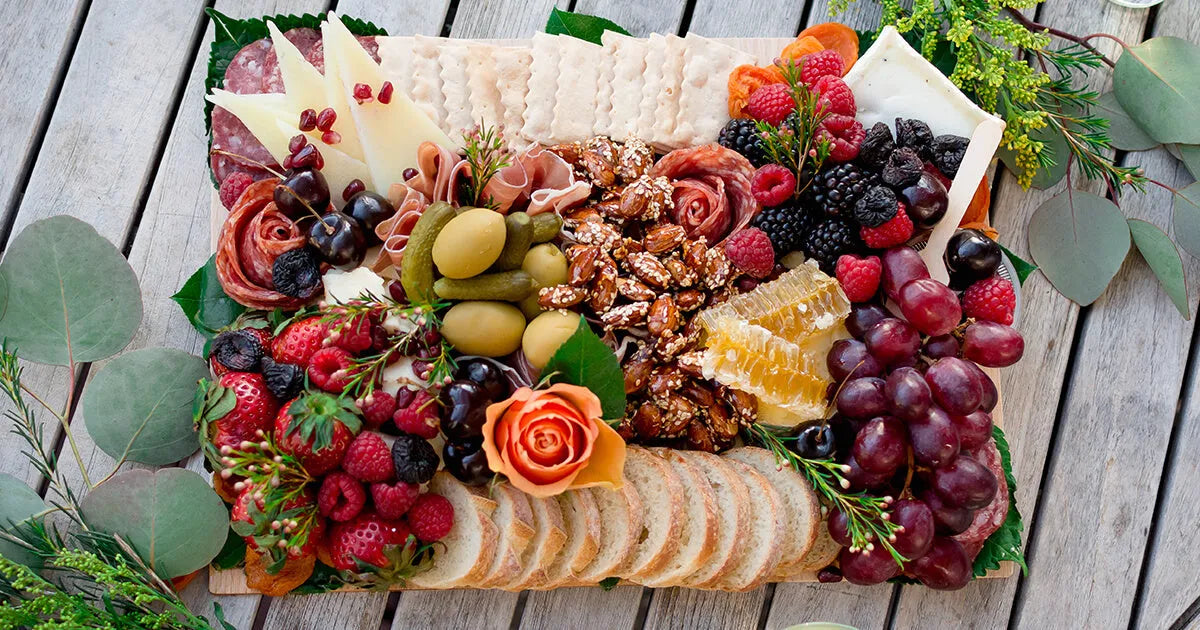3 Tips for the Perfect Spring Charcuterie Board
Honey Do's
We love a good charcuterie board, don’t we, folks? Here’s all the inspiration we could find for how to put together a board that’s just right for any kind of spring get-together and sure to get your guests experimenting with all kinds of fun flavors.
#1: Get the serving situation right.
Presentation is everything for charcuterie boards. (Admit it: you know you’re doing this for the photo op, right?) Mini bowls, ramekins, or other small serving bowls help keep the presentation clean and sophisticated, encouraging experimentation.
You’ll want blocks of cheese, not slices, so cheese knives are a must. And don’t forget toothpicks, which make it that much easier for tasters to combine and experiment with flavors. The classic straight-and-narrow toothpick works, but some bamboo cocktail forks bring a little more je ne sais quoi to your charcuterie.
Put tall, skinny bites — cucumber quarter, celery stalks, okra, or even Slim Jims (if it’s that kind of party) — into taller jars to conserve space. And instead of just using a traditional wooden board, try using slate tiles, marble slabs, or, to put a real spin on things, repurpose vintage vinyl records as a backdrop. (We are not responsible for any offended music snobs.)
#2: If it grows together, it goes together.
Local foods have a magical way of tasting great together. Call it terroir, or call it something normal and unpretentious, but it works. This goes for wine, cheese, fruit, and especially honey. Local Hive bottles 23+ honeys from across the U.S., each with a distinct flavor depending on which flowers the bees pollinated. Use our Honey Finder to find one that’s just right for your party, or shop our curated honey flights.
We made this guide to help you pair a few different Local Hive Honey blends with cheeses from all over. Check out the full blog on pairing honey and cheese here.
Another tip we learned along the way: honey makes funky cheeses – like Stilton and Roquefort – a whole lot more palatable. And if you just want something that always works, go for a firm, nutty cheese like Swiss, Gruyère, Emmental, and Gouda. They give you a good base for pairing all kinds of flavors, as well as the range of intensity you’ll find in red and white wines.
When pairing regional wines, don’t just jump for a familiar style of grape. Take the time to find out what a given region is known for. Unless you’re buying wine from a major winemaking region like Napa and Sonoma, there’s like to be just one wine that really hits the mark. Ask an expert at your wine store, or better yet, look for reviews from locals online.
To really help your guests catch the local love you put into your pairings, you can get extra cute with flags, stickers, or placards with the name and origin of the bites on your charcuterie board.
#3: Spring for seasonal flavors.
Seasonal fruit and veggies are always a must, but nothing says “spring” like flowers. Try decorating your board with flowers from your backyard garden, florist or grocery store. Or, take it a step further and go for some edible flowers.
As far as edible flowers go, honeysuckle is a classic. Just make sure not to eat the berries; they’re poisonous. Chamomile, daylily, squash blossoms, and calendula are all fairly popular choices thanks to their mild, but distinctly flavored petals. Chive blossoms, leeks and garlic (alliums) all have flowers that can add a surprising savory note to dips or garnishes. If you go with edible flowers, you’ll want to label them so guests know what’s on the menu and what’s just for show.
For an easy spring swap, start with your veggie crudité: instead of the typical carrot and celery crudité, go for asparagus, radishes, and sugar snap peas. Not only will they add a pop of color and a refreshing crunch.
You can capture the airiness of spring by opting for lighter meats than charcuterie board staples like salami and prosciutto. Smoked salmon, turkey breast, grilled chicken breast skewers, duck confit, smoked duck breast, or even varieties of cured fish can all play a role and encourage experimentation.

